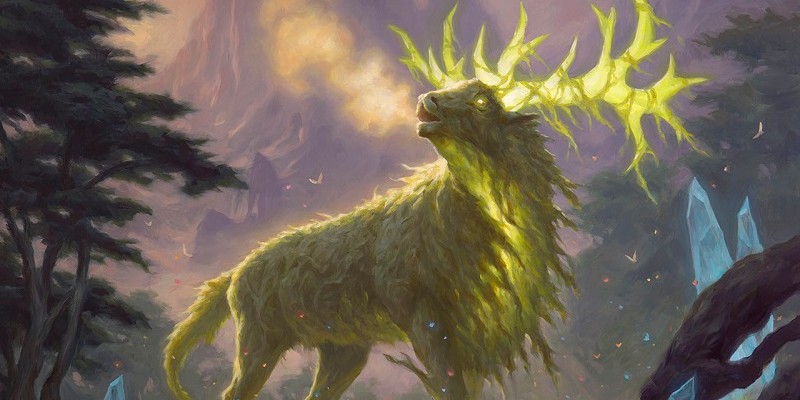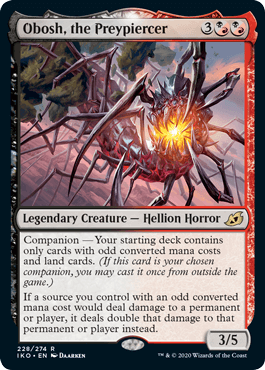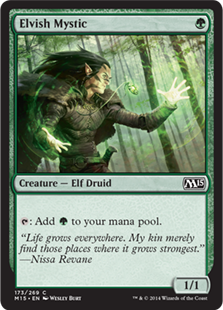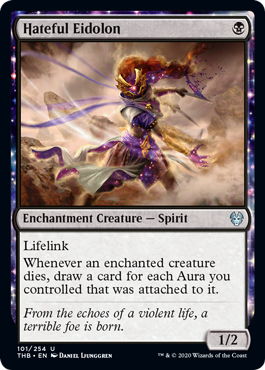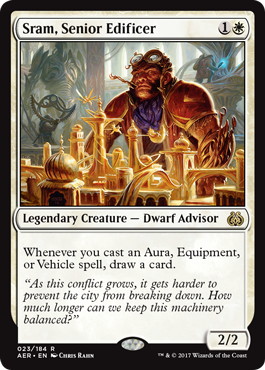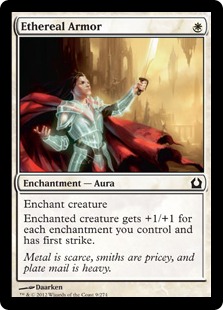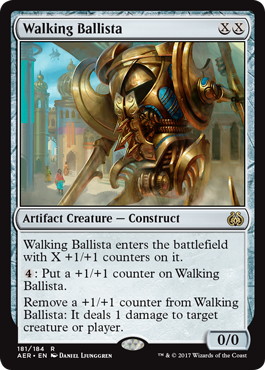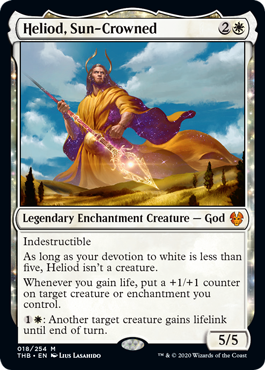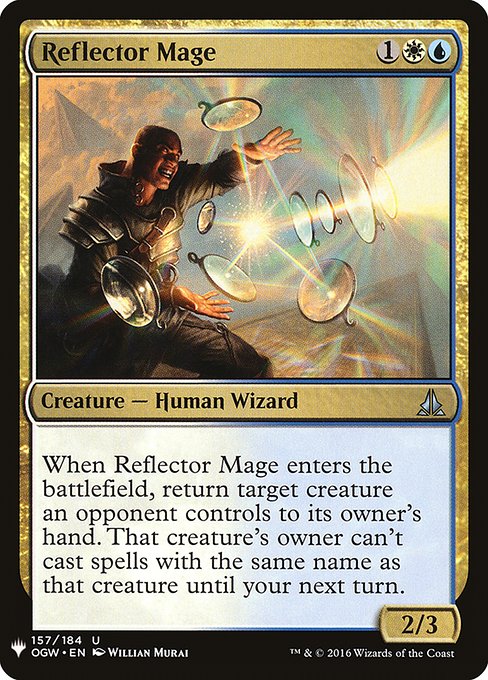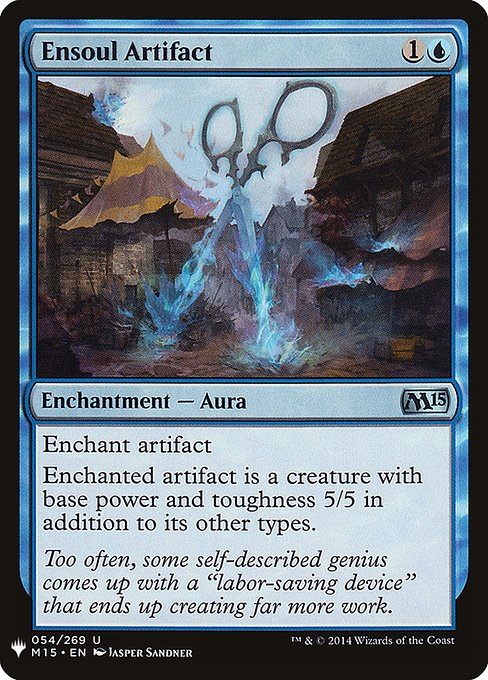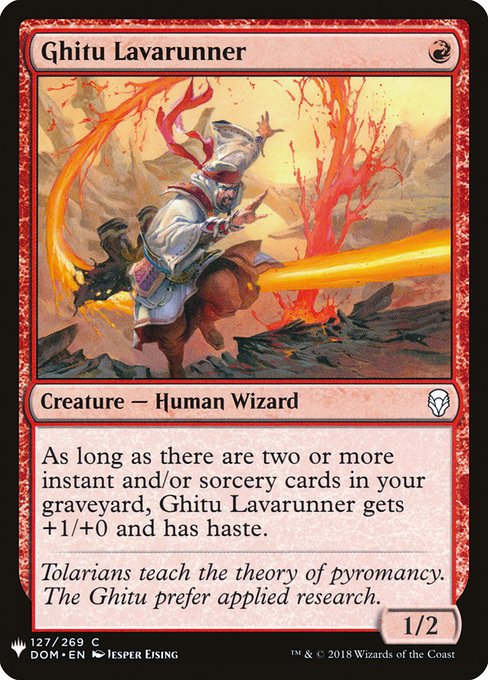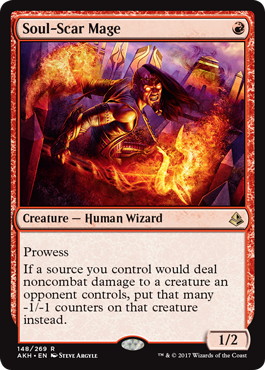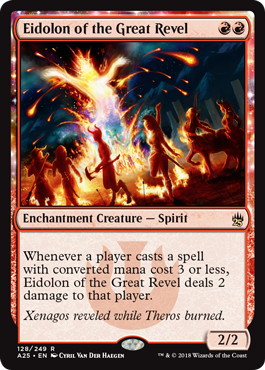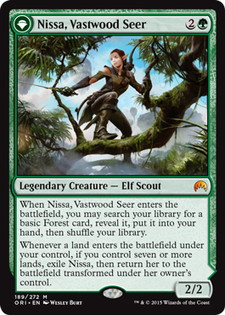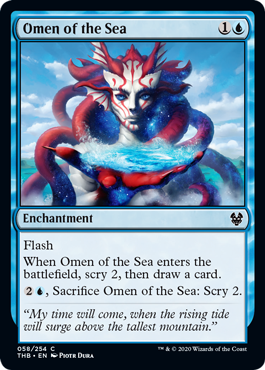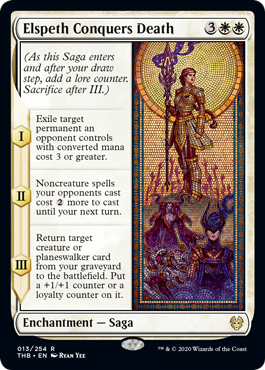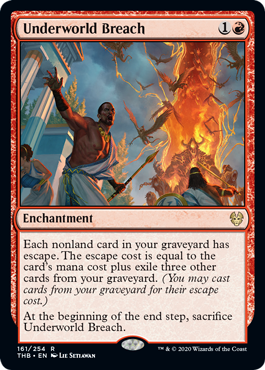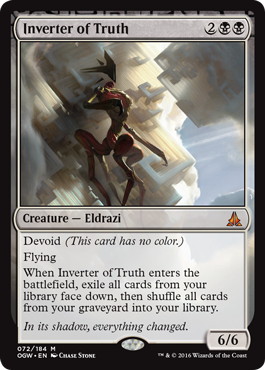Bringing a Companion to Pioneer
Not every new set has a lot of impact on every format. Only a few cards are usually strong enough to seriously impact formats with a broader card pool. Not so with Ikoria: Lair of Behemoths. Companion changed the way Magic is played. If the condition is met, you’ll basically start with an additional card in your opening hand. Having one less sideboard card doesn’t compare to having an additional card in your starting hand. Magic is often a game of trading resources, so getting more resources to start the game with gives you an incredible advantage. Or put otherwise, starting without a Companion will put you at a disadvantage.
Some decks get to add a Companion because they already met the condition. Others will have to adapt slightly to there. But the strongest are those decks where the Companion can be a powerful addition to an already strong deck.
In this article, I will specifically look at Pioneer. What decks can add a Companion? Which decks become stronger because of their new friend? Which new decks emerge because a Companion makes it viable? And which decks were strong, but are unable to play a Companion and might be worse off?
Overview of the Companions
For Constructed Magic, getting to know every Companion will be crucial. Not every Companion is equally strong. I think they can be divided in three categories:
1) Hard Requirement, but Strong Payoff
《Lurrus of the Dream-Den》
Lurrus has the highest payoff among Companions and seems the most pushed, especially in formats with larger card pools. You get to play an extra card the turn you cast it. If Lurrus was not dealt with, it will keep on generating card advantage.
《Obosh, the Preypiercer》
Having your entire deck deal double damage is no joke, but not being allowed to play two drops isn’t easy either.
《Gyruda, Doom of Depths》
Gyruda is viable as it’s a combo engine on its own, but I don’t think we’ll see Gyruda played outside of a dedicated combo deck. It is a free 8th card which comes with a friend, so there’s at least a lot of potential.
《Keruga, the Macrosage》
Keruga is a strong Companion in Standard, mostly thanks to Adventures being able to get around the deckbuilding restriction. However in faster formats, I don’t think Keruga will be playable.
2) Relatively Easy Requirement, but Weaker Payoff
《Yorion, Sky Nomad》
Yorion is an odd one. It’s definitely the strongest of this group, but it’s very hard to actually grasp how big a cost playing 80 cards actually is. For midrange decks however, the cost is the lowest while the effect has the most upside. I believe 80 cards will become the new standard for grindy decks in Standard, Pioneer and Modern.
《Jegantha, the Wellspring》
Some decks have this requirement fulfilled without any effort. A 5/5 for 5 isn’t impressive at all in most Constructed formats, but don’t underestimate the value of a free card. If every other card trades, the free card can make all the difference in the world.
《Zirda, the Dawnwaker》
As with Jegantha, Zirda is free in some decks. Zirda is a better Companion however, as decks using Zirda will often be able to leverage its static ability. In some formats, Zirda could also be a piece of new combo decks.
《Kaheera, the Orphanguard》
Kaheera can be the Companion of choice for decks without creatures. If a dedicated tribal deck exists for one of these creature types, Kaheera could become downright scary.
3) Requirement too Hard in Comparison to the Payoff
《Umori, the Collector》
The most likely shell for Umori is probably an all-creature deck. But even then, Umori isn’t even that impressive as a Companion.
《Lutri, the Spellchaser》
Lutri probably shouldn’t exist. It’s already banned in Commander and Brawl, is absolutely unfair in Limited, and pretty hard to adapt to the every Constructed format. Building a highlander deck is fun however, and Lutri at least gives you a nice incentive to do so.
Impact in Pioneer
Plenty of high level Pioneer tournaments are being held on Magic Online. I can strongly recommend competing in these tournaments. Or at least regularly checking the results of these tournaments, if you want to be up to date on what’s happening in Pioneer.
Gruul Stompy with Obosh
- Silvos1992
- – Gruul Stompy with Obosh
- Pioneer Super Qualifier – #12138028 on 04/23/2020
- (3rd Place)
2 《Mountain》
4 《Stomping Ground》
4 《Rootbound Crag》
2 《Game Trail》
2 《Mana Confluence》
-Land (22)- 4 《Elvish Mystic》
4 《Llanowar Elves》
4 《Bonecrusher Giant》
4 《Gruul Spellbreaker》
4 《Lovestruck Beast》
4 《Steel Leaf Champion》
3 《Slaughterhorn》
2 《Rhonas the Indomitable》
2 《Yorvo, Lord of Garenbrig》
1 《Klothys, God of Destiny》
-Creature (32)-
When playing this deck, mulligan to either 《Llanowar Elves》 or 《Elvish Mystic》. The plan of this deck is pretty straightforward: play an oversized creature on turn 2 and turn 3, cast Obosh on turn 4 and swing for lethal. Failing that, 《The Great Henge》 can give you an overwhelming advantage. Note 《Bonecrusher Giant》 // 《Stomp》 still gives you a 2-mana play when using Obosh as your Companion. Remember this damage won’t be doubled with Obosh, however.
Orzhov Auras with Lurrus
- AndyAWKWARD
- – Orzhov Auras with Lurrus
- Pioneer Super Qualifier – #12138028 on 04/23/2020
- (5th Place)
4 《Godless Shrine》
4 《Caves of Koilos》
4 《Concealed Courtyard》
-Land (18)- 4 《Alseid of Life’s Bounty》
4 《Favored Hoplite》
4 《Hateful Eidolon》
4 《Sram, Senior Edificer》
2 《Aphemia, the Cacophony》
-Creature (18)-
4 《Cartouche of Solidarity》
4 《Ethereal Armor》
4 《Gryff’s Boon》
4 《Sentinel’s Eyes》
4 《All That Glitters》
-Spell (24)-
4 《Brain Maggot》
2 《Hushbringer》
2 《Tomik, Distinguished Advokist》
2 《Dead Weight》
1 《Lurrus of the Dream-Den》
-Sideboard (15)-
This deck already proved its worth in Pioneer in the capable hands of Magic Pro League (MPL) member Ken Yukuhiro at Regional Players Tour Nagoya. Without making any changes, Orzhov Auras is able to use Lurrus as its Companion. An already strong deck using the strongest Companion means this gets scary fast. This deck is both fast and resilient. This would be my pick for current best deck in Pioneer.
Azorius Heliod Combo with Yorion
- SourceOdin
- – Azorius Heliod Combo with Yorion
- Pioneer Super Qualifier – #12138028 on 04/23/2020
- (2nd Place)
4 《Hallowed Fountain》
4 《Irrigated Farmland》
4 《Glacial Fortress》
4 《Temple of Enlightenment》
4 《Nykthos, Shrine to Nyx》
-Land (34)- 4 《Walking Ballista》
4 《Thraben Inspector》
4 《Charming Prince》
4 《Knight of the White Orchid》
2 《Anafenza, Kin-Tree Spirit》
2 《Daxos, Blessed by the Sun》
4 《Heliod, Sun-Crowned》
4 《Reflector Mage》
4 《Arcanist’s Owl》
-Creature (32)-
2 《Stasis Snare》
2 《Gideon’s Intervention》
3 《Elspeth Conquers Death》
3 《Teferi, Time Raveler》
-Spell (14)-
4 《Damping Sphere》
2 《Glass Casket》
2 《Skysovereign, Consul Flagship》
1 《Lavinia of the Tenth》
1 《Teferi, Time Raveler》
1 《Yorion, Sky Nomad》
-Sideboard (15)-
A combo deck isn’t where I’d expect to see Yorion at first. Playing 80 cards decreases the chances of drawing your combo. This deck often plays as a regular midrange deck, however. The amount of value you can get by Yorion’s enters the battlefield trigger is impressive. Especially, Yorion combined with 《Charming Prince》 can generate loads of card advantage. Generating value while also threatening a game-winning combo is a strong combination. This deck is a contender for sure, and Yorion pushes it to the next level.
Izzet Ensoul with Jegantha
- Pintogeddon2
- – Izzet Ensoul with Jegantha
- Pioneer Super Qualifier – #12138028 on 04/23/2020
- (18th Place)
2 《Steam Vents》
4 《Shivan Reef》
4 《Spirebluff Canal》
3 《Spire of Industry》
1 《Ipnu Rivulet》
4 《Darksteel Citadel》
2 《Mutavault》
-Land (21)- 4 《Ornithopter》
4 《Stonecoil Serpent》
4 《Bomat Courier》
4 《Gingerbrute》
1 《Hope of Ghirapur》
4 《Steel Overseer》
4 《Skilled Animator》
-Creature (25)-
2 《Wild Slash》
2 《Fry》
2 《Tormod’s Crypt》
1 《Aether Gust》
1 《Abrade》
1 《Lava Coil》
1 《Shadowspear》
1 《Aethersphere Harvester》
1 《Jegantha, the Wellspring》
-Sideboard (15)-
Izzet Ensoul has been a popular deck in Pioneer for a while. It gets to add Jegantha for no cost. The general plan of this deck is to create undercosted 5/5s. The best way to beat this deck is using cheap interaction. Getting a free 5/5 to top your curve should not be underestimated here. This is another example of an already strong deck getting stronger because it’s been given a Companion.
Boros Burn with Lurrus
- elad3127
- – Boros Burn with Lurrus
- Pioneer Super Qualifier – #12138028 on 04/23/2020
- (7th Place)
4 《Sacred Foundry》
4 《Battlefield Forge》
4 《Inspiring Vantage》
-Land (19)- 4 《Ghitu Lavarunner》
4 《Monastery Swiftspear》
4 《Soul-Scar Mage》
4 《Eidolon of the Great Revel》
3 《Viashino Pyromancer》
-Creature (19)-
4 《Boros Charm》
3 《Lightning Strike》
4 《Light Up the Stage》
4 《Wizard’s Lightning》
3 《Skewer the Critics》
-Spell (22)-
3 《Searing Blood》
2 《Ash Zealot》
2 《Wear/Tear》
1 《Deflecting Palm》
1 《Skullcrack》
1 《Kari Zev’s Expertise》
1 《Lurrus of the Dream-Den》
-Sideboard (15)-
With only 12 white mana sources, casting Lurrus isn’t actually easy in Boros Burn. You’d never want to actually put Lurrus in this deck, but as a free 8th card, it’s incredibly strong. Burn decks often fail to deal the last points of damage because the early drops are dealt with, while they draw too many lands. Lurrus gives this deck a lot of reach. Prepare for this deck if you plan to play Pioneer.
Bant Midrange with Yorion
- Andrea Mengucci
- – Bant Midrange with Yorion
- Pioneer Preliminary – #12138076 on 04/22/2020
- (5-0)
3 《Plains》
2 《Island》
4 《Breeding Pool》
4 《Hallowed Fountain》
4 《Temple Garden》
4 《Fabled Passage》
2 《Glacial Fortress》
2 《Hinterland Harbor》
2 《Sunpetal Grove》
2 《Lumbering Falls》
-Land (32)- 4 《Thraben Inspector》
4 《Satyr Wayfinder》
4 《Uro, Titan of Nature’s Wrath》
2 《Courser of Kruphix》
2 《Nissa, Vastwood Seer》
-Creature (16)-
4 《Growth Spiral》
4 《Supreme Verdict》
4 《Baffling End》
4 《Omen of the Sea》
2 《Detention Sphere》
3 《Elspeth Conquers Death》
4 《Teferi, Time Raveler》
3 《Teferi, Hero of Dominaria》
-Spell (32)-
4 《Mystical Dispute》
2 《Aether Gust》
2 《Barrier Breach》
2 《Narset, Parter of Veils》
1 《Yorion, Sky Nomad》
-Sideboard (15)-
Lastly, I want to show this rather new deck. MPL member Andrea Mengucci played this list to great success. Bant Midrange generates lots of value with Yorion. This deck goes way over the top of whatever your opponent is trying to do. It’s a collection of the best available cards in Pioneer. I think this deck is here to stay and a currently a great choice in Pioneer. An interesting sideboard card Andrea chose to play is 《Barrier Breach》, a new card from Ikoria, which is great versus the Orzhov Auras deck highlighted earlier.
Conclusion
There are still plenty of other great deck choices in Pioneer, but I would be hesitant to pick up a deck without Companion right now. Putting yourself at a disadvantage from the get-go isn’t what I’d advise right now. While Lotus Breach and Dimir Inverter are still getting played, they aren’t putting up the results they once were.
I think there’s still room for plenty of innovation in Pioneer and I’m excited to see how the format evolves when everyone adapts to having Companions available.
Lastly, I want to point out that you should be aware of the deckbuilding constrictions Companions create for your opponent. A Lurrus as Companion means your Boros Burn opponent can’t have 《Bonecrusher Giant》 and is probably playing a very low to the ground curve. A player with Zirda as their Companion can still have 《Damping Sphere》 in their sideboard. But if they still declare Zirda as their Companion in postboard games, you’ll know they didn’t bring it in.
As always, if you have any suggestions, questions or a sweet Lutri list: hit me up on Twitter!
Pascal Vieren (Twitter)


